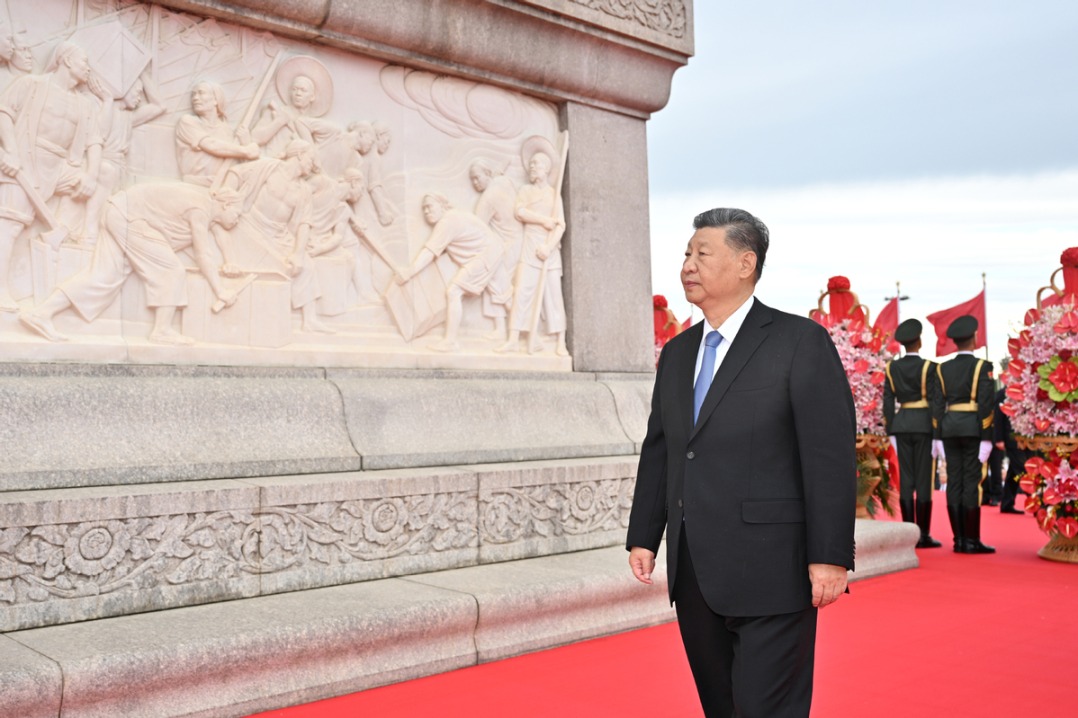Currency converters
Weaponization of global payments systems and the dollar by the US in recent years has spurred an accelerated shift toward currency multipolarity


Currency multipolarity is gaining pace. The use of national currencies to settle cross-border payments — instead of relying on the US dollar — is an accelerating trend. China is leading the way in this. Recently, for the first time, the Chinese renminbi was used to settle more of China's trade than the US dollar. Over 52 percent of China's trade was settled with the renminbi; a little over 40 percent was settled with the US dollar. Thirty years ago, the renminbi was barely used, and over 80 percent of China's trade was settled in the US dollar.
A diminishing proportion of central bank reserves around the world is held in the US dollar — from around 80 percent 20 years ago to less than 60 percent today. This shift is marked not by the replacement of the US dollar by one particular currency, but by a process of diversification.
The real economy and institutional foundations for currency multipolarity have been unfolding for decades. One critical impetus has been the evolving contours of global trade flows and the development of China's economy. As China has evolved to become the largest trading partner of over 140 nations, the need to settle trade between countries with the US dollar has diminished. It is the developments in the real economy and the trade sector that have laid the foundations for the move to national currency-denominated trade settlements.
Institutionally, currency multipolarity is enabled by the progressive rollout of bank-to-bank bilateral local currency swap agreements. These agreements ensure the availability of liquidity to enable the settlement of accounts, and provide a cushion against temporary liquidity problems. The People's Bank of China, the nation's central bank, has signed bilateral local currency swap agreements with the central banks and monetary authorities of more than 40 countries and regions, with the total size of about 4 trillion yuan ($553.49 billion).
Additionally, alternative bank-to-bank messaging systems have emerged that bypass the US-dominated SWIFT interbank messaging platform. Both China and Russia have rolled out alternatives — the CIPS and SPSF respectively, which can support settlements outside of the SWIFT regime. As US scholars Henry Farrell and Abraham Newman recently showed in their book Underground Empire: How America Weaponized the World Economy (2023), the US government effectively abused the fact that SWIFT operated a database in Virginia to enforce sanctions on banks and countries it did not approve of.
The weaponization of global payments systems and the US dollar generally in recent years has only contributed to the acceleration of the shift toward currency multipolarity. Sanctions and the freezing or even the confiscation of US dollar-denominated assets have resulted in increased risks for those holding such assets. As US monetary policy pushed up interest rates, exposure to the rising US dollar-denominated debt repayment costs for developing countries has further compounded concerns.
How quickly can the move to national currency-based trade settlements take place? The short answer is quicker than one may initially expect. A case in point is Russia over the past two years. Now, almost all Russian trade is settled with a range of national currencies, without the euro or the US dollar. Over 95 percent of Russia's trade with China is settled in the renminbi or ruble.
Other institutions enabling currency multipolarity include commodity markets that enable trade in commodities in various national currencies. The Shanghai Petroleum and Natural Gas Exchange enables pricing and settlement in the renminbi. There is no compulsion anymore for global petroleum products to be priced and settled in the US dollar. Russian crude oil and gas trade isn't settled in the US dollar, effectively bringing to an end five decades of petrodollar domination.
China now runs two rare earth exchanges — the Baotou Rare Earth Products Exchange in the Inner Mongolia autonomous region, which opened in 2014, and the Ganzhou Rare Metal Exchange in Jiangxi province, which was launched in 2019.
The digitization of currencies and supply chains can now be expected to round out the overall institutional and technical architecture for currency multipolarity. China is a global leader in digital currencies. All major BRICS countries are also making rapid progress in the development, testing and implementation of their respective national digital currencies. By 2025-26, all the founding BRICS countries are expected to have digital currencies actively in use.
BRICS is now working on a cross-border payments system to enable streamlined and low-cost trade settlements among members using national currencies. The development of this system is likely to draw on the lessons learned from the blockchain-enabled cross-border interbank settlements platform, mBridge. The project was led by a consortium involving the People's Bank of China, the central banks of Thailand and the United Arab Emirates, the Monetary Authority of Hong Kong and the Bank of International Settlements. Saudi Arabia's central bank, previously one of its 29 observers, recently joined these ranks.
The BRICS New Development Bank is pressing ahead with plans to increase the amount of development finance it provides in national currencies. The target is to issue some 30 percent of its total financing in national currencies by 2025.
As for supply chain digitization, this is unfolding, as a combination of hardware and software, including a growing regime of applicable standards, take root. Supply chain digitization closes the loop, as it links the domain of digitized money with the activities and resources in the real economy. Just as the real economy gives impetus to currency multipolarity, so digitization of supply chains creates a seamless link between the circulation of money and the circulation of goods. Transactions time and costs can be expected to be dramatically reduced, leading to an ongoing process of transactions efficiency.
Currency multipolarity is part and parcel of an unfolding multipolar world. The technical foundations and institutions needed to accelerate this process are well and truly in place.

The author is adjunct professor at Queensland University of Technology and a senior fellow at Taihe Institute. The author contributed this article to China Watch, a think tank powered by China Daily.
Contact the editor at [email protected].
































